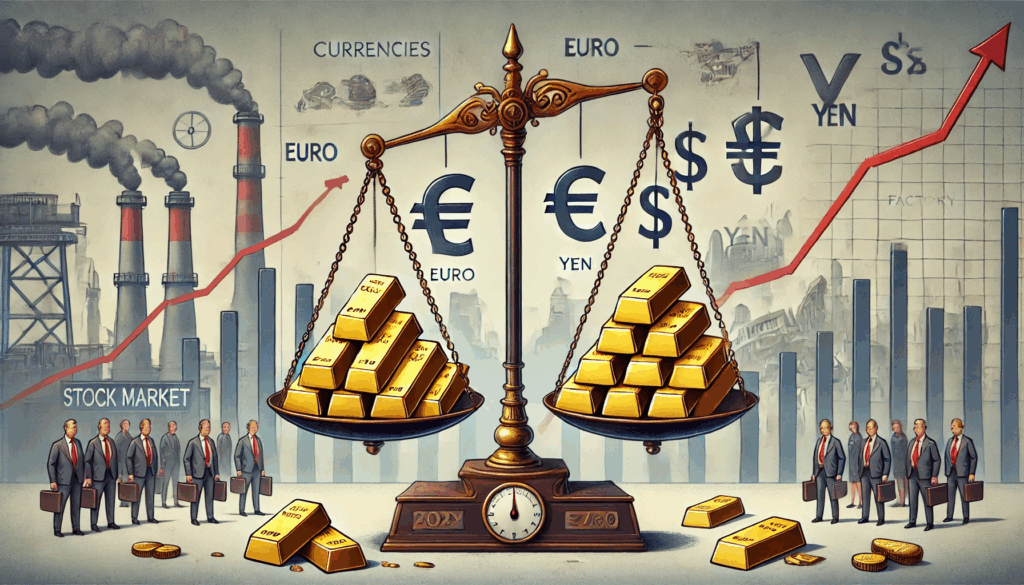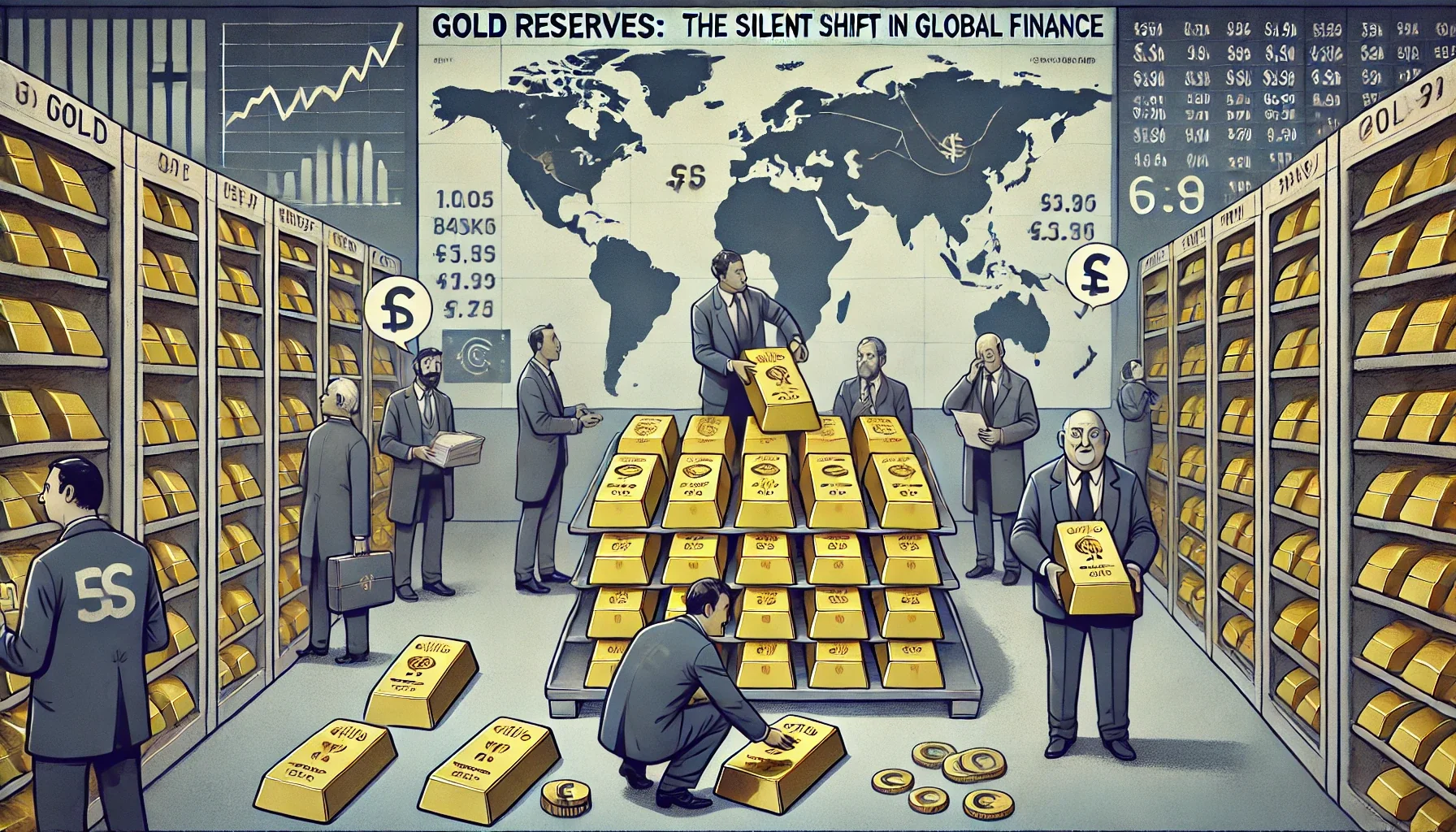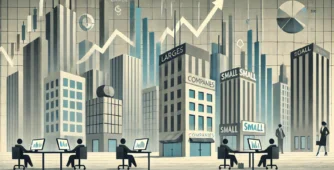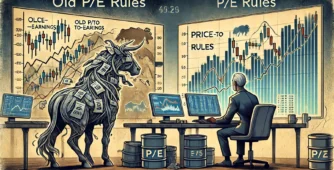What Happens When Debt Increases Too Much?
When a country takes on excessive debt compared to its GDP, managing that debt becomes increasingly challenging. A notable example is the United States. As the debt continues to grow, the government must pay a substantial amount in interest, which can eventually become unsustainable. To address this issue, countries often allow their currency to lose value, a trend that can be clearly observed when comparing the currency to gold.
Historical Example: The Dollar vs. Gold
In 1971, the US dollar began to lose its gold backing. At that time, the value of one dollar was equivalent to a significantly larger amount of gold than it is today. By 1980, the dollar had lost nearly 98% of its value against gold, dropping from 1,000 mg of gold to around 40-50 mg.
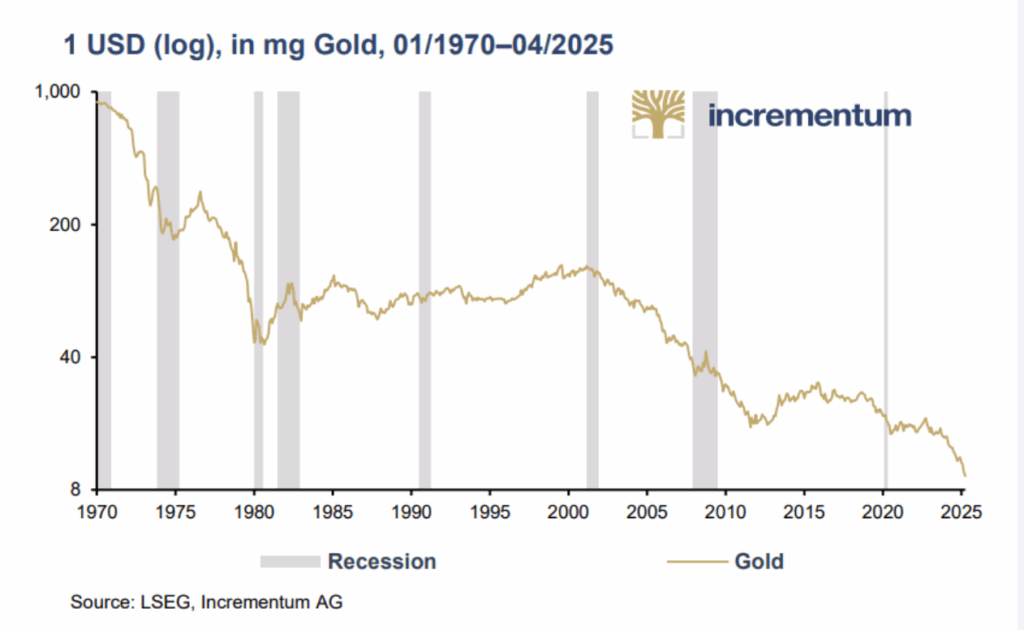
Following this decline, the economy remained relatively stable for nearly 20 years. However, in the 2000s, another recession emerged, causing the dollar to depreciate further against gold, with gold prices soaring from $250 to $2,000. After a few years of stagnation, we appear to be entering a new phase of currency depreciation.
Why This Keeps Happening
Since 1971, the US Federal Reserve has had complete control over printing dollars, with no limits in place because the currency is no longer backed by gold. In an effort to manage economic challenges, more dollars are printed, leading to inflation. Currently, interest rates in the US have reached around 5%, the highest in many years, making it difficult for the economy to experience smooth growth.
Two Possible Paths Forward
There are two potential paths ahead:
- Print more money and use it to purchase bonds, which would lower bond yields but significantly increase inflation.
- Allow bond yields to rise even higher, potentially reaching 7-10%. However, this could negatively impact the stock market. If investors can safely earn 10% from bonds, they may be less inclined to take risks in equities, resulting in a major decline in stock prices.
What This Means for India
While India is not currently facing the same challenges, the ripple effects can still be felt. The Indian Rupee has recently crossed 86 against the US dollar, and inflation remains a concern. These are unstable times, and sudden shifts in the global market can lead to sharp changes in prices.
What are your thoughts on this situation? Share your opinions in the comments below! If you found this blog helpful, don’t forget to SHARE it with your friends!
WeekendInvesting launches – The Momentum Podcast
This episode of THE MOMENTUM PODCAST features Manubhav, a third-generation real estate professional, sharing his unique journey navigating both worlds.
Discover:
✅ FROM PROPERTY TO PORTFOLIO: Manubhav’s transition from his family’s established real estate business to exploring equity investments.
✅ MARKET WISDOM: His candid experiences with market swings, including COVID-19’s impact on his SIPs, and lessons learned from F&O and smallcase.
✅ THE BIG COMPARISON: A fascinating look at real estate vs. equity returns, featuring real-world numbers from his family’s 40-year property investment.
✅ UNCOMMON INSIGHTS: Why gold is a family favorite and the surprising state of equity investing in smaller Indian towns.

